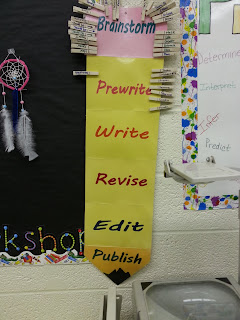Ha ha. This has to be one of my favorite blog titles. It just reminds me of that song from the 80's.
Either way, this is the time of the year where most teachers are looking up ideas where the students can have fun, get messy, and not turn anything in to grade.
It is called
The End Of The Year! (If only I could pull off some sound effects right now...)
This year is a little different for me compared to my other years. This is my last year at my current school.
(Down sizing, financial changes, enrollment, etc...) Either way, I won't be back here next year.
That gives me a lot of wiggle room when working with my students these final days. Here are my ideas so far. (Mostly for 8th grade, granted.)
1. Career scavenger hunt
2. Class Predictions/Awards
3. Info graphics
4. Memory Board
5. Cedar Point Trip
6. Graduation video
7. Free Labor...
Sorry the last one isn't really a fun activity for students. It's more of a mind numbing job to help pass the time during the final days.
Either way the first few a pretty good.
Career scavenger hunt:
1. Have the students write in large bold letters what they want to be when they grow up on a sheet of paper.
2. Take a picture of the student holding the paper.
3. Have the student go around the school looking for props or things they can make props out of to demonstrate their choice career.
4. Take a picture of their great imitation.
Example: I have a student who wanted to be a vet. He will write the word veterinarian on a legal sized piece of paper and we will take his picture. After that, I will send him around the school looking for something(s) to help him imitate a veterinarian. Like a Styrofoam cup, ear buds, and a stuffed animal. (The cup and ear buds can be put together to make a stethoscope and he could be examining the stuffed animal.)
That is just one example. I can't wait to see what else my students come up with.
Class Predictions/Awards
These are the things that you always see in high school year books. Think "Most likely to succeed." Either way, I still need more pictures of my students for their graduation video. Here's my plan:
1. Have class vote on pre-set awards
- Most likely to succeed
- Most likely to become a farmer
- Most likely to take over the world
- Best athlete
- Most likely to have a town named after him/her
- Most likely to invent something
- Best smile
- Friendliest Person
- Most likely to become a star
2. Announce the winners to the class and take their picture while they demonstrate why they won that award.
To be clear, there are nine awards because I only have nine students. If there were 20 students I would have 20 different awards.
Also, if you are looking for ideas, be careful. There are suggestions of awards like "Most likely to be incarcerated."
Info Graphics
There is a new form of non-fiction taking the internet by storm.
THE INFO GRAPHIC! (Again, sound effects would rock here.)
Either way, our students should be exposed to these things. I love this idea that I came up with in the shower this morning. (That's where the best ideas come from, isn't it?)
Yesterday, two of my three classes discussed and looked over several info graphics. Now they can pick any topic their hear desires and create an info graphic. They can do this on the computer, by hand, however they please.
Memory Board
This is something that I keep seeing different versions of on Pinterest. I figured, we have extra poster board, why not do something like it.
I'll have all of my classes write their favorite memory for the year on one poster board. (It'll look like a large collage.) We can hang it up in the hallway so the students can see what each other wrote.
Cedar Point
When I started at my current school two years ago there really was no major thing for our graduating 8th grade class. I figured, let's do something extra special so they can just spend a day being kids.
Since we live in northern Ohio, Cedar Point became our main idea.
From that point on (this is our third year) we take our 8th graders to Cedar Point for one last fun day together.
I have to admit, some of my favorite memories come from these Cedar Point trips.
Free Labor
The end of the school year comes with all sorts of mandatory duties. Normally we put a movie on and take care of these duties while our students are talking over the movie. (I'm not gullible enough to think they actually pay attention to it.)
This year, I'm enlisting help with my inventories and cleaning duties. Since I'm leaving this year too, I will be using their help to pack up my stuff and my car. (What fun, right?)
Those are my great ideas for this school year's closing. I hope that they get us through this last week that is coming.
After all, there's only 6 more days left.







.jpg)



